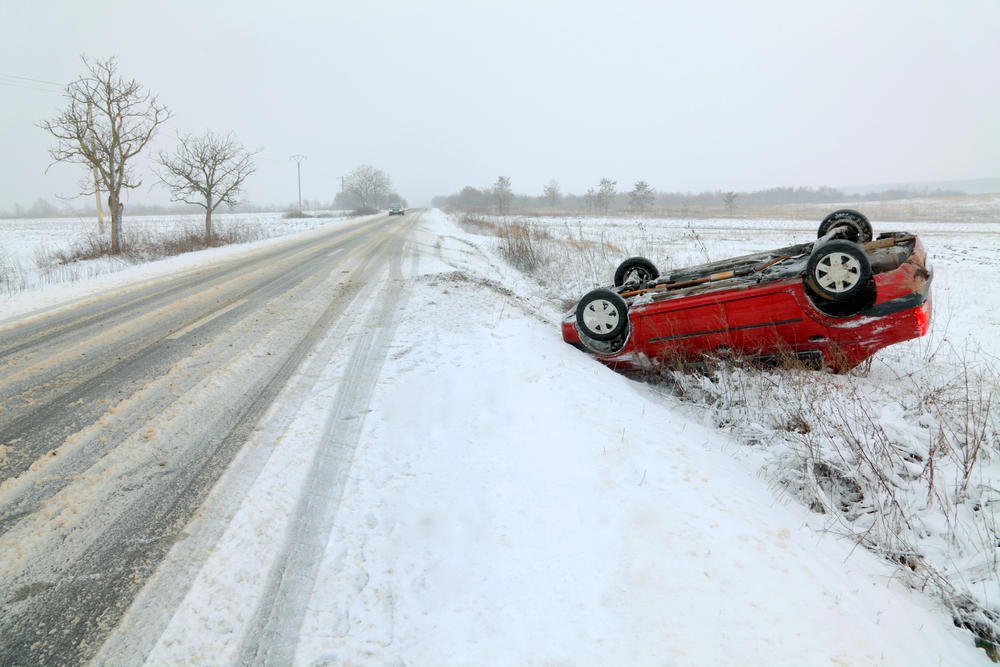In many parts of mainland Europe it is common, or even a compulsory legal requirement, for drivers to keep two sets of wheels and tyres – a set of ‘summer’ tyres and a set of specialist ‘winter’ tyres. Although they are not compulsory in the UK, due to our relatively mild winters, they are certainly advisable for those living in remote rural areas where adverse weather is more common.
So what are ‘winter tyres’ and what difference do they make?
There is a huge lack of awareness in the UK about winter tyres, with many motorists being unaware that they exist, or believe that they are only useful during heavy snow or ice. As the clip below demonstrates, winter tyres are made of an extra grippy rubber compound with a high silica content. The tread pattern is specifically designed to remain flexible at low temperatures which gives them good traction and braking performance on snow and ice. This may sound fantastic, but this softness also makes them less efficient for summer use as they do not stop as fast on dry roads. As soon as the temperature drops below +7 degrees, then winter tyres are advisable.
Should you buy winter tyres?
It is recommended that you switch to winter tyres in the UK between October and April. Naturally, a great deal of the debate is down to cost. Winter tyres must be fitted in sets of four. Fitting only one pair will affect the balance and stability of the car. Unless you live in rural areas, it may be difficult to justify the cost. A set of 4 tyres would cost approximately £500 per car for a small hatchback, or considerably more for a 4×4. On the plus side, winter tyres are made by most of the main manufacturers like Michelin – http://www.michelin.co.uk/
Some suppliers will provide these pre-fitted to a set of steel wheels too, however, if you are changing alloy wheels to steel, you may have to change the design of wheel nuts used as well. It is always best to have wheels fitted by experts, like your local Mercedes Dealership, as they can offer a huge amount of advice and support.
Of course, once you have changed your tyres there is the issue of storage. In Germany, there are huge warehouses dedicated to tyre storage. Alas this is not the case in the UK where you will have to find a storage solution for your summer tyres during winter and visa verse during the summer months. That being said, they are a good investment for those who live out of town and as the clip demonstrates, they do make a significant difference to the car’s safety and performance in winter conditions.
What should I do if I want the added safety benefits of winter tyres but do not have the storage?
Some believe that if you only have one set of tyres it is better to have winter tyres than summer ones as on balance, the UK is generally damper most of the year around with only a short summer. They are just as quiet as summer tyres and last just as long, however they do not stop as quickly in the dry, so once again, location is a factor. The other alternative is ‘All Season Tyres’.
What are All Season Tyres?

All season or 4 season tyres are becoming increasingly popular across Europe, with Goodyear – https://www.goodyear.eu/en_gb/consumer.html#/dealer-finder – winning most of the European prizes for all season performance. They tend to be a little more expensive than standard summer tyres. In the UK, most garages supply summer tyres as standard. All Season tyres have a high silica content for low temperature flexibility and a tread pattern somewhere between a normal summer tyre and an out-and-out winter tyre. However, if you do live in rural areas and want to avoid the hassle and cost of swapping wheels/tyres twice a year then they are the ideal investment in your driving safety.
Hints and tips to staying safe on winter roads:
Keep your windscreen cleaning tank topped up.
Wipe the front and rear lights and ensure the bulbs are all in working order.
On ice and slippery roads, use second gear, rather than first to avoid wheel spin.
Always allow extra stopping distance in wet conditions.
Avoid this – Safe driving everyone!
